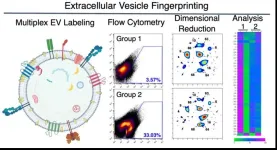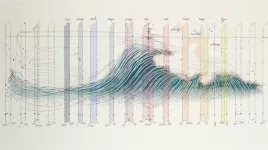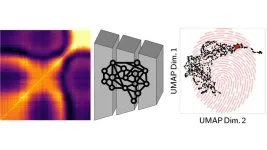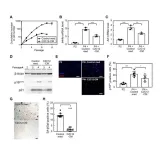(Press-News.org) Concern that social media is driving the teen mental health crisis has risen to such a pitch that the majority of states in the country have filed lawsuits against Meta (which owns Instagram and Facebook) and the U.S. surgeon general called last month for warning labels on platforms, similar to those on tobacco.
New research from the University of Washington finds, though, that while some teens do experience negative feelings when using Instagram, the dominant feeling they have around the platform is boredom. They open the app because they’re bored. Then they sift through largely irrelevant content, mostly feeling bored, while seeking interesting bits to share with their friends in direct messages — the most constant source of connection they found on the platform. Then, eventually bored with what researchers call a “content soup,” they log off.
The study tracked the experiences of 25 U.S. teens moment by moment as they used the app. Teens leaned on a few techniques to stabilize their experiences — such as using likes, follows and unfollows to curate their feeds, and racing past aggravating content. The researchers used these results to make a few design recommendations, including prompts to cue reflection while using the app or features that clarify and simplify how users can curate their feeds.
The team presented its research on June 18 at the ACM Interaction Design and Children Conference in Delft, Netherlands.
“A lot of the talk about social media is at the extremes,” said lead author Rotem Landesman, a UW doctoral student in the Information School. “You either hear about harassment or bullying — which are real phenomena — or this kind of techno-utopian view of things. Companies like Meta, among others, seem to say they are thinking about wellbeing constantly but we've yet to see concrete results of that. So we really wanted to study the mundane, daily experience of teens using Instagram.”
To capture this in-the-moment experience, the team first trained the participants in mindfulness techniques and had them download an app called AppMinder. The simple interface, which the researchers developed, would pop up five minutes after the teens started using Instagram and have them fill out a quick survey about how they were feeling emotionally and why. The pop-ups came once every three hours. Teens were supposed to use Instagram and fill out at least one response a day for seven days, though many submitted multiple responses each day.
Finally, researchers interviewed teens about their responses and had them open Instagram again and narrate how they were feeling in real time and explain how they were experiencing certain features.
“We saw teens turning to Instagram in moments of boredom, looking for some kind of stimulation,” said co-senior author Alexis Hiniker, a UW associate professor in the iSchool. “They were finding enough moments of closeness and connection with their friends on the app to keep them coming back. That value is definitely there, but it’s really buried in gimmicks, attention-grabbing features, content that’s sometimes upsetting or frustrating, and a ton of junk.”
Much of what Instagram’s algorithm served up was not what the teens were looking for. Yet they’d keep wading through hundreds of posts to find a single meme or piece of fashion inspiration to share with their friends. Overall, they found the most value in the app’s direct message function, not in this scrolling.
Because they found value in specific experiences, teens employed several mitigation strategies to focus their time on the app:
Trying to curate their feeds to emphasize posts that made them feel good rather than bad or bored, by following, unfollowing, hiding and liking
Scrolling quickly, skipping or logging off when content made them feel bad
Toggling Instagram features — hiding like-counts, turning off certain notifications — to reduce negative emotions
“Instagram’s push notifications and algorithmically curated feeds forever hold out the promise of teens experiencing a meaningful interaction, while delivering on this promise only intermittently,” said co-senior author Katie Davis, a UW associate professor in the iSchool. “Unfortunately, it’s much easier to identify the problem than to fix it. The current business model of most social media platforms depends on keeping users scrolling as often and for as long as possible. Legislation is needed to compel platforms to change the status quo.”
Based on their findings, the researchers offered three design changes to improve teens’ experiences:
Notifications, like those from AppMinder, that prompt teens to consider what they’re on Instagram to do and to reflect in the moment
Features that make curating feeds easier, such as a “This is good for me” button that clearly highlights positive content
The use of data to track signs of well-being and its opposite — for example, tracking when users skip past content or log off and pairing this with other data
This summer, the team will take the data from the study and examine it with a separate group of teens, aiming for further insights and recommendations.
“It is not and should not be the sole responsibility of teens to make their experiences better, to navigate these algorithms without knowing how they work, exactly,” Landesman said. “The responsibility also lies with companies running social media platforms.”
Additional co-authors include Jina Yoon, a UW doctoral student in the Paul G. Allen School of Computer Science & Engineering; JaeWon Kim, a UW doctoral student in the iSchool; Daniela E. Muñoz Lopez, a UW doctoral student in psychology; and Lucía Magis-Weinberg, a UW assistant professor of psychology. This research was partially funded by the Oread Fund and the CERES network.
For more information, contact Landesman at roteml@uw.edu, Hiniker at alexisr@uw.edu and Davis at kdavis78@uw.edu.
END
Even on Instagram, teens mostly feel bored
2024-07-16
ELSE PRESS RELEASES FROM THIS DATE:
UC Irvine’s electronic patient-reported outcome tool reduces cancer care disparities
2024-07-16
Irvine, Calif., July 15, 2024 — A University of California, Irvine research team has developed and implemented an intervention to enhance cancer care support services for racial and ethnic minority patients undergoing chemotherapy.
The electronic patient-reported outcome tool is a web-based application that allows individuals to enter their health data into a smartphone, tablet or computer. In this study, the ePRO was available in multiple languages and coupled with digital analytics. At each treatment visit, participants digitally ...
Research shows protein isoform inhibitors may hold the key to making opioids safer
2024-07-16
Researchers at the University of Arizona Health Sciences identified a new way to make opioids safer, increasing the pain-relieving properties of opioids while decreasing unwanted side effects through the spinal inhibition of a Heat shock protein 90 isoform.
Opioids are the gold standard of chronic pain treatment, but they come with a host of negative side effects including constipation, addiction potential and respiratory depression that can lead to death. This study, published in Scientific Reports, offers a potential new way to treat acute and chronic pain by reducing the amount of opioid needed for ...
Pocket-sized invention revolutionizes ability to detect harmful materials
2024-07-16
Imagine knowing what berry or mushroom is safe to eat during a hike or swiftly detecting pathogens in a hospital setting that would traditionally require days to identify.
Identification and detection of drugs, chemicals and biological molecules invisible to the human eye can be made possible through the combined technology of a cellphone camera and a Raman spectrometer — a powerful laser chemical analysis method.
Dr. Peter Rentzepis, a professor in the Department of Electrical and Computer Engineering at Texas A&M ...
A new addition to the CRISPR toolbox: Teaching the gene scissors to detect RNA
2024-07-16
Bacteria have developed special defense mechanisms to protect themselves against viruses, which by no means infect only humans. As part of these so-called CRISPR-Cas systems, a CRISPR ribonucleic acid (crRNA), which serves as a “guide RNA,” recognizes regions of a foreign genome, such as viral DNA. The CRISPR-associated (Cas) nuclease, directed by a crRNA, then renders it harmless by cutting it like a pair of scissors. Humans have exploited this strategy: “CRISPR, often referred to as ‘gene scissors’, is the basis of many molecular technologies,” says ...
Vanderbilt scientists develop new tool that could lead to noninvasive “liquid biopsies”
2024-07-16
Biopsies are clinical tools commonly used to diagnose a variety of diseases or to monitor tissue for abnormal growth or even rejection of a transplant. During biopsies, tissue samples are removed from the body so they can be examined more closely, but depending on the type of tissue that’s needed, the procedure can be rather invasive.
Researchers from the School of Medicine Basic Sciences recently developed an analytical tool that could lead to the use of “liquid biopsies” as a substitute ...
Many breast cancer survivors do not receive genetic testing, despite being eligible
2024-07-16
ANN ARBOR, Michigan — As cancer treatment and survivorship care relies more on understanding the genetic make-up of an individual’s tumor, a new study from the University of Michigan Health Rogel Cancer Center finds that many breast cancer survivors who meet criteria for genetic counseling and testing are not receiving it.
The good news: Among those who do get testing, nearly two-thirds who have a genetic variant are reaching out to family members to talk about their results.
“Our findings support a rapidly growing movement to simplify clinical guidelines to ...
Scientists find that small regions of the brain can take micro-naps while the rest of the brain is awake and vice versa
2024-07-16
Sleep and wake: they’re totally distinct states of being that define the boundaries of our daily lives. For years, scientists have measured the difference between these instinctual brain processes by observing brain waves, with sleep characteristically defined by slow, long-lasting waves measured in tenths of seconds that travel across the whole organ.
For the first time, scientists have found that sleep can be detected by patterns of neuronal activity just milliseconds long, 1000 times shorter than a second, revealing a new way to study and understand the basic brain ...
Scientists develop new artificial intelligence method to create material ‘fingerprints’
2024-07-16
Study shows how materials change as they are stressed and relaxed.
Like people, materials evolve over time. They also behave differently when they are stressed and relaxed. Scientists looking to measure the dynamics of how materials change have developed a new technique that leverages X-ray photon correlation spectroscopy (XPCS), artificial intelligence (AI) and machine learning.
This technique creates “fingerprints” of different materials that can be read and analyzed by ...
Sun-like stars found orbiting hidden companions
2024-07-16
Most stars in our universe come in pairs. While our own Sun is a loner, many stars like our Sun orbit similar stars, while a host of other exotic pairings between stars and cosmic orbs pepper the universe. Black holes, for example, are often found orbiting each other. One pairing that has proved to be quite rare is that between a Sun-like star and a type of dead star called a neutron star.
Now, astronomers led by Caltech's Kareem El-Badry have uncovered what appear to be 21 neutron stars in orbit around stars like our Sun. Neutron stars are dense burned-out ...
Roles of PEDF in exercise-induced suppression of senescence and its impact on lung pathology in mice
2024-07-16
“[...] the present results strongly suggest the potential of PEDF as a myokine linking exercise training to the suppression of senescence.”
BUFFALO, NY- July 16, 2024 – A new research paper was published on the cover of Aging (listed by MEDLINE/PubMed as "Aging (Albany NY)" and "Aging-US" by Web of Science) Volume 16, Issue 13, entitled, “Roles of pigment epithelium-derived factor in exercise-induced suppression of senescence and its impact on lung pathology in mice.”
Senescent cells contribute ...





